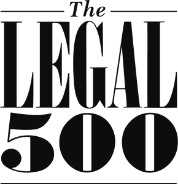The Insurance (Amendment) Ordinance 2020 enables Hong Kong insurers to issue insurance linked securities ("ILS"). Commonly known as catastrophe bonds, insurance linked securities provide the means for Hong Kong insurers to re-insure risk through the insurance securitisation market.
In this article, we provide an overview of the changes introduced by the new legislation. Our articles written subsequent to this article provide updates on the market for insurance linked securities, the Hong Kong government grant scheme for insurance linked securities, the extension of this scheme and the regulation of special purpose insurers authorized to issue insurance linked securities.
If you'd like more information on insurance linked securities, please contact one of our insurance lawyers.
The Insurance (Amendment) Ordinance 2020 was enacted on July 23, 2020 and came into force in Hong Kong on March 29, 2021. The legislation amends the Insurance Ordinance, introducing a new class of insurance business called “special purpose business”. This new special purpose business class effects a dramatic change to the way in which insurers may spread risk, enabling Hong Kong insurers to establish captive re-insurers which are authorized for special purpose business and which can issue insurance linked securities (sometimes known as ILS) to securitize insurance risks underwritten by them.
Background To Insurance Linked Securities
The need for insurers to spread risks underwritten by them has increased over time. One way for insurers to spread risk is to raise capital directly from investors, thus increasing the capital buffer available for insurers to meet claims from insured events. Another way for insurers to spread risks is to re-insure the risks they undertake.
What are Insurance Linked Securities?
Insurance linked securities offer a hybrid means for insurers to spread risks and for investors to participate directly in risks of specific insured events. Insurance linked securities differ from traditional debt or equity securities issued by insurance or reinsurance companies where investors participate in the full range of risks from all insured events underwritten by those companies. In insurance linked securities, returns depend predominantly on whether the risks of the specific insured events linked to those securities arise. From an investor’s point of view, insurance linked securities offer potentially high returns with little, if any, correlation to other asset classes such as stocks, bonds and real estate.
What are Catastrophe Bonds?
Catastrophe bonds are a type of insurance linked securities. A catastrophe bond is sometimes known as a “cat bond”. It is a short to medium term financial product offering attractive rates of return. Insurers issue this bond to cover certain specified events, such as hurricanes or earthquakes. If the anticipated event does not occur, the investors get back their principal as well as a return. Typically, the investor stands to receive a high return on the investment, provided the event does not occur.
If, however, the event does materialise, the insurer uses the principal to pay the policy or policies that the bond is intended to cover. Any principal remaining after that payment to respond to an insured event is returned to investors. In this way, the insurer or reinsurer is able to pass on their liabilities under that policy or those policies to the investors to the extent of the principal, and the liability to repay the principal is extinguished. Insurance linked securities are therefore high yield but high risk.
Insurance (Amendment) Ordinance 2020
The Hong Kong Government introduced the Insurance (Amendment) Ordinance 2020 to support the reinsurance industry by facilitating the issuing of insurance linked securities. In introducing the legislation, the Secretary for Financial Services and the Treasury, Mr Christopher Hui Ching-yu, said that the legislation will create new business opportunities for the insurance sector and generate demand for related professional services, helping to consolidate Hong Kong's position as an international risk management centre.
Position Prior to Insurance (Amendment) Ordinance 2020
Prior to the introduction of the Insurance (Amendment) Ordinance 2020, it was not practicable to establish special purpose vehicles to cover specific insured risks by issuing investment linked securities. Such vehicles would, by virtue of covering specific insured risks, be carrying on an insurance business. They would, therefore, be required to be authorized by the Insurance Authority and thus, in the absence of legislation otherwise, like other insurers, would be subject to prudential regulatory standards intended to ensure that they have sufficient capital to meet claims from insured events.
There is, however, little point in capitalizing such special purpose vehicles to meet regulatory standards as it is intended that the insurance risks undertaken by them be fully covered by proceeds from the issuance of insurance linked securities.
Position After Insurance (Amendment) Ordinance 2020
The Insurance (Amendment) Ordinance 2020 establishes a regulatory framework for insurers to establish special purpose vehicles whose sole function is to cover specific insured risks by issuing insurance linked securities. Under this framework, the Insurance Authority may authorize special purpose vehicles to undertake a new class of insurance business, namely the special purpose business class. Though the legislation is not explicit and the Insurance Authority has yet to issue formal guidance, this new special purpose business class is expected to free special purpose vehicles from the capital requirements and certain prudential regulatory requirements which apply to insurance companies carrying out traditional classes of insurance business. As a result, it is expected that it will be possible for special purpose vehicles to look exclusively to insurance linked securities issued by them to fully fund the risks which they underwrite.












